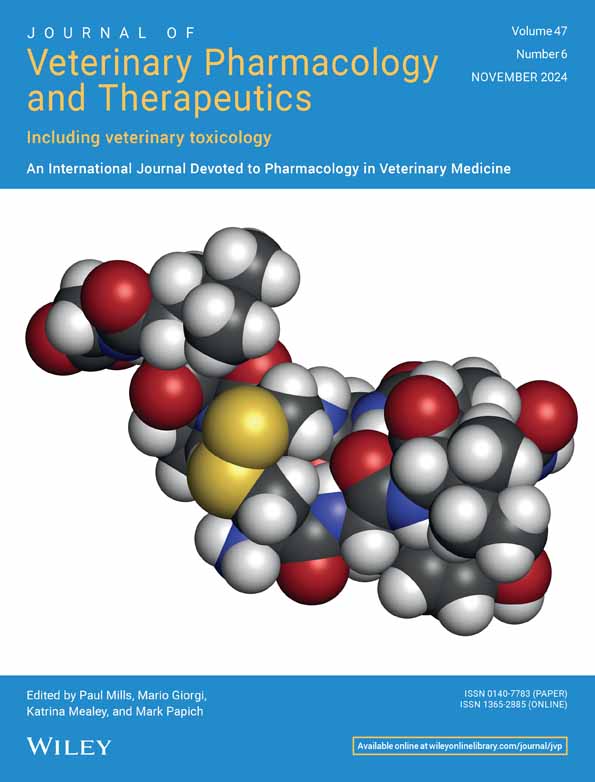Potential for extending the chloramphenicol dosing interval for canine urinary tract infections
Abstract
Canine urinary excretion of chloramphenicol was evaluated to optimize a dosing protocol for treating urinary tract infections. Seven healthy male intact purpose-bred Beagles and six healthy client-owned dogs of various breeds each received a single oral 50 mg/kg dose of chloramphenicol. Urine was collected at baseline, and 6, 8, 12, and 24 h after chloramphenicol. Chloramphenicol urine concentrations were measured and compared to the epidemiological cutoff value for E. coli (16 mcg/mL). At 8 h, mean chloramphenicol concentration from all dogs was 266.9 mcg/mL (90% CI 136.2–397.7 mcg/mL) but was lower in Beagles than client-owned dogs. At 12 h, mean chloramphenicol concentration from all dogs was 111.0 mcg/mL (90% CI 36.9–185.0 mcg/mL) and was lower in Beagles (10.6 mcg/mL, 90% CI 1.4–19.8 mcg/mL) than client-owned dogs (228.0 mcg/mL, 90% CI 103.0–353.1 mcg/mL). Urine half-life was similar for all dogs (1.8–3.8 h). This justifies dosing chloramphenicol 50 mg/kg PO q 8 h. All client-owned dogs additionally maintained concentrations well above 16 mcg/mL, for 12 h, suggesting that q 12-h dosing might be appropriate for non-Beagle dogs with susceptible lower urinary tract infections. A clinical trial in dogs with urinary tract infections is needed as well as further investigation into potential breed differences.
CONFLICT OF INTEREST STATEMENT
The authors report no conflict of interest.
Open Research
DATA AVAILABILITY STATEMENT
Data available on reasonable request from the authors.




